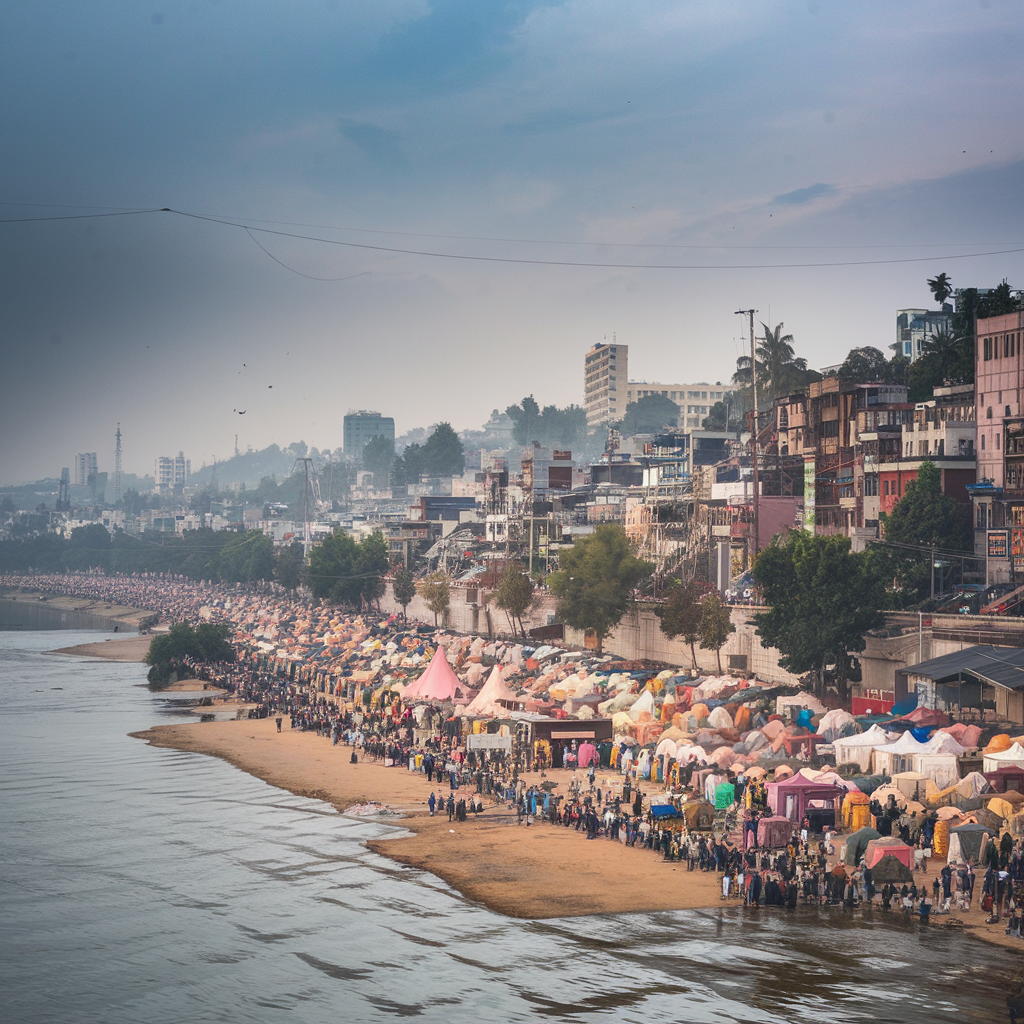In a tragic turn of events, the Maha Kumbh Mela in Prayagraj, Uttar Pradesh, witnessed a devastating stampede in the early hours of January 29, 2025. The incident resulted in the deaths of at least 39 pilgrims, with many others sustaining injuries. The stampede occurred as tens of millions of devotees gathered for a ritual bath at the confluence of the Ganges, Yamuna, and the mythical Saraswati rivers, considered one of the most auspicious acts in Hinduism.
Circumstances Leading to the Tragedy
Eyewitnesses reported that the stampede was triggered when pilgrims attempted to jump barricades during a procession of holy men, leading to a chaotic crush. The situation was exacerbated by the sheer volume of attendees, with authorities anticipating a record 100 million participants on this particular day of the six-week-long festival. Overcrowding and the closure of certain routes to the river contributed to the panic, resulting in suffocation and trampling among the devotees.
Official Response and Public Outcry
In the aftermath of the incident, Prime Minister Narendra Modi expressed his condolences, describing the event as “extremely sad.” However, there has been significant public outrage, with opposition parties criticizing the government for mismanagement and alleging that authorities prioritized VIPs over common devotees. Despite the scale of the tragedy, local officials have yet to release official casualty figures, leading to further frustration among the public.
Historical Context of Stampedes at Kumbh Mela
This is not the first time the Kumbh Mela has been marred by such tragedies. In 1954, a stampede during the festival resulted in over 800 deaths, marking one of the deadliest crowd-related disasters in India’s history. More recently, in 2013, at least 36 pilgrims lost their lives in a similar incident. These recurring tragedies highlight the persistent challenges in managing massive crowds during such large-scale religious gatherings.
Efforts to Enhance Safety Through Technology
In preparation for the 2025 Maha Kumbh Mela, organizers had implemented advanced technological measures to prevent such incidents. Artificial intelligence (AI) was employed to monitor crowd densities and predict potential stampede situations. Approximately 300 cameras and overhead drones were deployed across the festival site, feeding real-time data into AI algorithms designed to alert authorities when crowd concentrations reached dangerous levels. Despite these efforts, the tragedy underscores the challenges inherent in managing such vast gatherings.
The Path Forward
The recent stampede at the Maha Kumbh Mela serves as a somber reminder of the critical importance of effective crowd management strategies during large-scale events. While technological advancements like AI offer promising tools for enhancing safety, their implementation must be complemented by robust on-the-ground planning and infrastructure. Comprehensive training for security personnel, clear communication channels for attendees, and contingency plans for emergency situations are essential components of a holistic approach to crowd safety.
Furthermore, transparent communication from authorities in the aftermath of such incidents is crucial to maintain public trust. Timely release of accurate casualty figures and details of the incident can help manage public sentiment and provide closure to the families of the victims.
As the nation mourns the loss of lives in this tragic event, it is imperative for organizers, authorities, and the community at large to reflect on the lessons learned and to strengthen measures to prevent such incidents in the future. The Maha Kumbh Mela, as a profound expression of faith and spirituality, should be a safe and enriching experience for all who attend.

